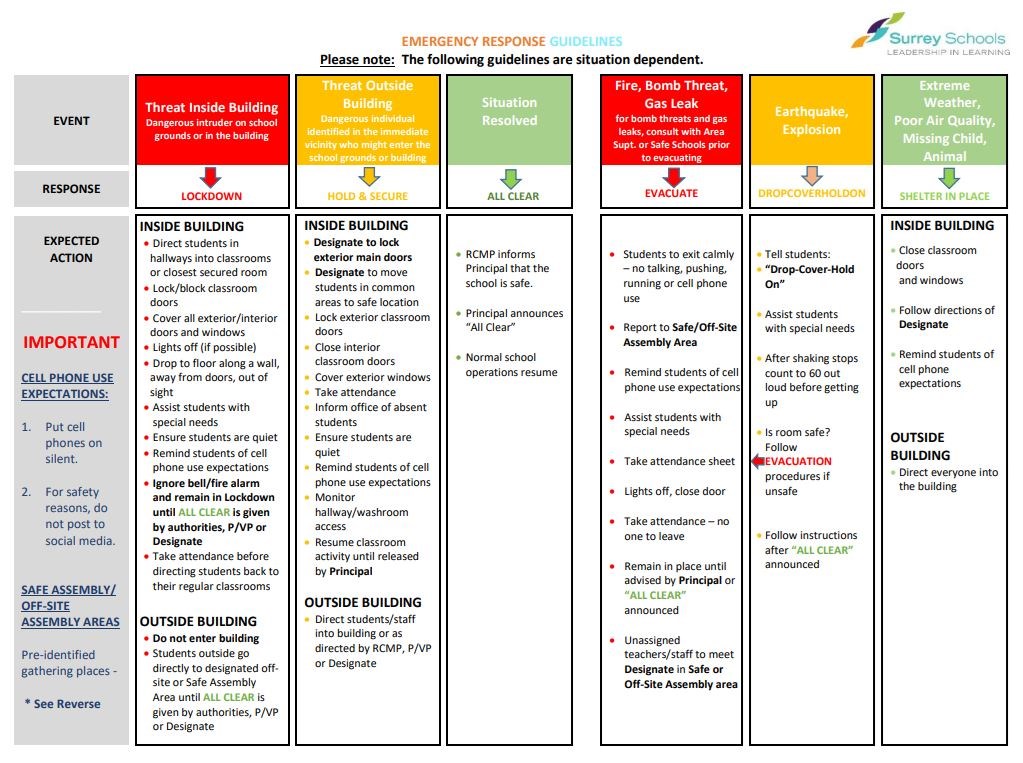School safety alert notifications – what do they mean?

All our schools have safety plans and security measures in place and regularly practice a range of safety drills. We also work closely with the Surrey RCMP and Surrey Police and have open lines of communication with the appropriate authorities on every critical incident.
School safety plans outline protocols and procedures to manage a variety of situations and events, and include the district’s school safety alert system, which is intended to keep students, staff and volunteers secure during an actual or potential threat.
School administrators are authorized to activate a safety alert at their school, and regularly participate in provincially mandated drills to ensure everyone at the site understands the protocols and what to do in different circumstances.
The alert system uses specific terms and actions for various situations:
- LOCKDOWN is used in situations where there is a perceived safety risk inside or in close proximity to the building.
- HOLD & SECURE is used where there is a safety risk outside the building or in the surrounding community.
- ALL CLEAR is used once the situation has been resolved and there is no longer a threat to students, staff or visitors at the school.
- EVACUATE is used when there is a threat such as a fire, bomb threat or gas leak.
- DROP-COVER-HOLD ON is used during events such as an earthquake or explosion.
- SHELTER IN PLACE is used where there are concerns about issues such as extreme weather, poor air quality or a wild animal on school grounds.
While school safety alerts are most often used as a precaution, it’s important that parents and guardians familiarize themselves and their students with these terms.
You can also view the detailed guidelines here.



